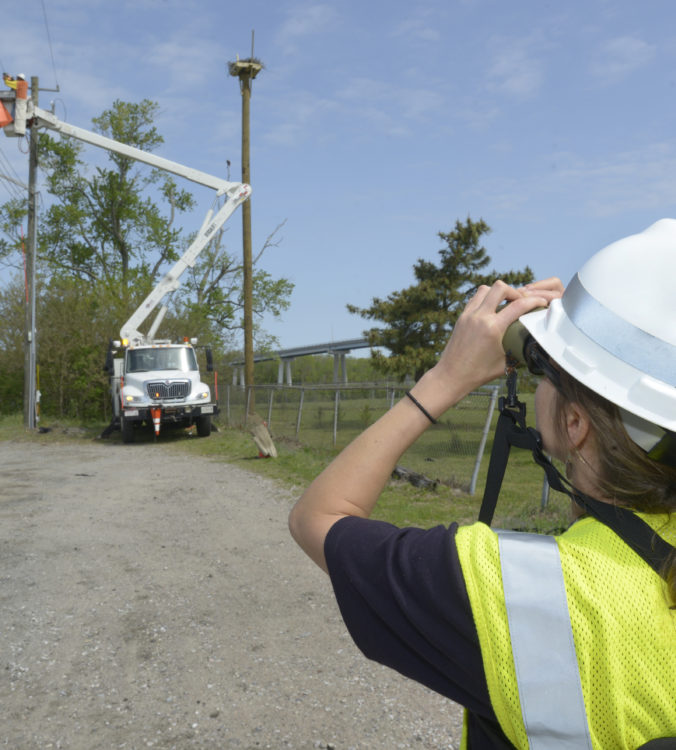Hundreds of thousands of birds migrate through southern New Jersey each year. Various species of migratory birds, including ospreys, frequently perch or nest on our poles. We sat down with Atlantic City Electric Principal Environmental Program Manager Cristina Frank to better understand her role and the measures we take to help protect avian species and other wildlife.
What does avian protection mean to you?
I am passionate about my role and our work protecting birds and the natural environment. Birds are an umbrella species, so by protecting them and their habitats, we can ensure we leave a smaller footprint, which is a driving force behind the work I do. Our service area contains an impressive network of habitats for birdlife. Unfortunately, conditions can be hazardous for birds near energy infrastructure. Recognizing this risk and the resulting reliability impacts, we have created a comprehensive avian protection program so that birds can continue thriving in and around our infrastructure. I am proud of the work that we do every day to protect birds and other wildlife through this program. I often hear firsthand from our customers, conservation partners and wildlife enthusiasts, like myself, about their appreciation of our efforts.
Osprey hold a special place for many in the region. How do you protect osprey?
Ospreys frequently nest on our distribution and transmission poles. Their nests can be quite large and messy, as they return to the same nesting location each year. Osprey nests on our infrastructure can be extremely dangerous for the osprey and can also lead to power outages. We constantly monitor nesting activities and have a process in place to react quickly when needed. We collaborate with New Jersey Department of Environmental Protection’s Endangered and Non-Game Species Program and Conserve Wildlife Foundation of New Jersey to ensure our crews are equipped with the right tools to remove nesting material and install insulation equipment and nest excluders to prevent re-nesting. Ospreys are extremely persistent nest builders, so we often work directly with Conserve Wildlife and U.S. Department of Agriculture’s Animal and Plant Health Inspection Services to install nesting platforms nearby and carefully relocate osprey nests to safer nesting platforms.
What are some of the innovative measures you’ve taken to protect birds and other wildlife?
Although we are an industry leader in avian protection, as bird populations grow, we observe new nesting behaviors that drive us to keep pace by implementing innovative design standards and products to prevent nesting. We often collaborate with other energy companies and product manufacturers to identify effective product solutions and deterrent strategies to prevent animal interactions. For example, this year we are piloting drone installation of bird diverters on lines to prevent bird collisions over water.
How do you help protect endangered species?
We approach wildlife protection in a number of proactive ways. We conduct habitat management surveys, not just to determine the general condition and components of the land in an area, but also to identify animal or plant species that need particular care and attention. We also enforce stringent response procedures to minimize our impact on wildlife habitats. When planning major projects, we often adjust construction activities to avoid migratory, nesting or other sensitive times for endangered species throughout the year. We also frequently work with regulatory agencies to identify corridors where multiple power lines can be grouped together to minimize impact on wildlife habitat in the region.


